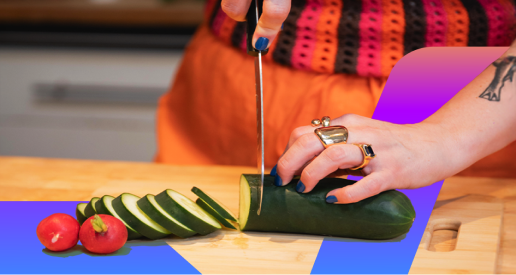After four weeks of candy chaos, the investigation is complete and the verdict is in. Sugar’s been playing tricks while pretending to be a treat.
But this Halloween, you’re not just surviving the candy onslaught. You’re flipping the script. The case is closed, and you’re walking away as the rebel who cracked the code on cravings, crashes, and those so-called fun-size lies.
Welcome to your Candy Survival Guide: your field manual for outsmarting the candy cartel, decoding your glucose data, and keeping your energy steady through Halloween (and beyond).
The Survival Playbook

1. Pair candy with protein or fiber: it slows the spike.
A handful of almonds before that mini Snickers can change everything. Protein and fiber slow glucose absorption, reducing post-candy blood sugar spikes and keeping energy steady.
You’re not banning candy; you’re building a strategic blood sugar defense. Add a little peanut butter, Greek yogurt, or a fiber-packed snack first, and you’ll tame the glucose surge before it starts.
Pro tip: Eat candy after a balanced meal, not on an empty stomach, to blunt the impact and prevent an energy crash later.
2. Time candy before movement, not before bed.
Your muscles are your metabolic accomplices. When you eat sweets before physical activity (a workout, walk, or trick-or-treat lap around the block), your body uses that glucose for energy instead of storing it.
Eat candy before bed, and it sits in your bloodstream like a suspect in holding, waiting to cause overnight trouble.
Case file note: Even 10–15 minutes of activity can shift how your body handles glucose. Think of it as using your metabolism as a getaway car.
3. Walk off the hit: ten minutes is your best getaway.
Even a short walk after eating Halloween candy can help lower post-meal glucose levels. It’s a science-backed move that keeps you from crashing and clears sugar from the bloodstream faster.
You don’t need a full workout; just a few minutes of motion. Walk the dog, stroll the neighborhood, or dance in the kitchen. Every step counts toward better blood sugar balance.
Pro move: Pair candy with movement (not mindless snacking) for a steady energy curve instead of a spike-and-crash.
4. Choose nut-based or dark chocolate
Not all candy is created equal. Nut-based treats, like peanut butter cups, almond clusters, or dark chocolate squares, have more protein and fat, which help slow sugar absorption and keep you satisfied longer. Dark chocolate (70% cacao or higher) also brings antioxidants and less added sugar, a win for both heart health and glucose control.
Detective insight: The more balanced the treat, the steadier your energy. A small serving of quality chocolate beats a handful of sugary bites every time.
5. Don’t keep the stash: out of sight, out of spike zone.
Willpower fades, but glucose data doesn’t lie. Leaving candy in plain sight invites repeat offenses. Donate leftovers, share them with friends, or freeze a few favorites for later when you’re truly in the mood, not just reacting to a craving.
Pro tip: Keep one or two pieces as a planned treat after exercise; your metabolism will thank you. Every detective knows when to seal the evidence and move on.
Verdict: You’ve cracked the candy case.

The candy cartel may tempt and tease, but you’re no longer fooled by flashy wrappers or “harmless” fun-size bars. You’ve decoded the metabolic clues and learned how to keep your blood sugar steady through Halloween.
With Signos, the evidence is right in your hands. Every spike, drop, and data point helps you understand how your body truly responds, so you can outsmart sugar all year long.
This Halloween, the case is closed. You’re not the candy victim; you’re the metabolic detective. Case closed.




.svg)


.jpg)







.svg)
.svg)
.svg)
.svg)
.svg)
.svg)
.svg)
